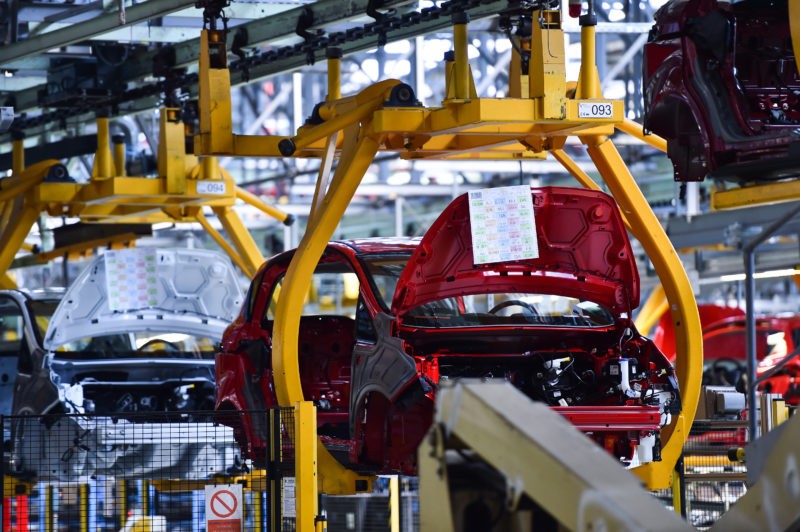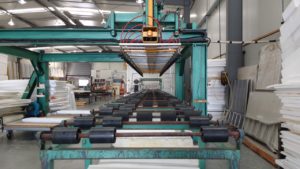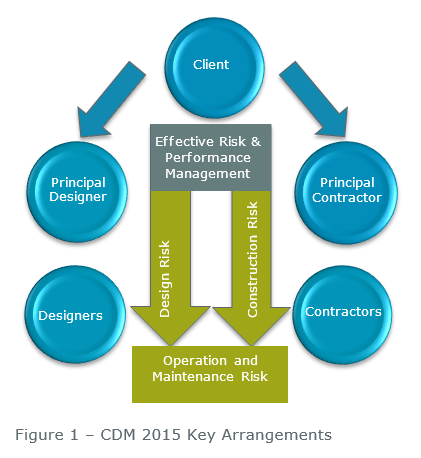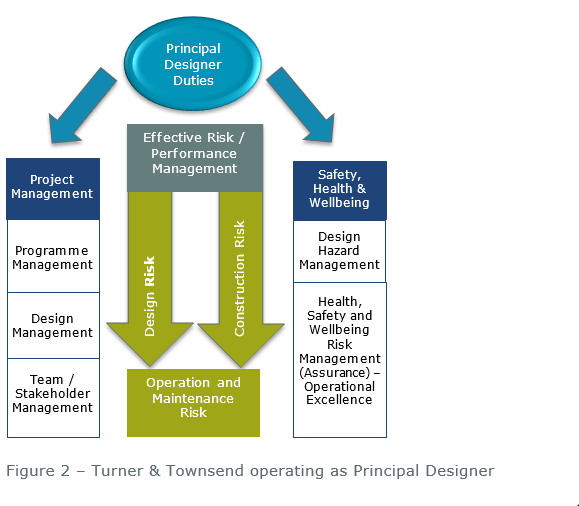CDM in manufacturing
CDM in the industrial and manufacturing sector
It is well known that health and safety in the construction industry is a high concern. Industrial and manufacturing clients often do not appreciate how the Construction (Design and Management) Regulations 2015 (CDM) apply to them, and the consequences of non-compliance. This article, By Michael Spanczak, Associate Director, Turner & Townsend SHQ and Richard Lyle, Director, Turner & Townsend Suiko, discusses how CDM can be applied and how Turner & Townsend has assisted clients in this area.

The applicability of the CDM within industrial and manufacturing (I&M) environments, is often not discussed and the meaning of engineering construction work is not easily understood. The Engineering Construction Industry Association has defined engineering construction work as:
The design, construction and maintenance of process plant across the oil and gas, water, environmental, steel and metal, cement, glass, paper, brewing and distillation, food, power generation, nuclear waste reprocessing, pharmaceutical production, petrochemical and chemical sectors.
I&M projects falling into the scope of CDM include:
- Design/installation of new machinery;
- Re-organising or redesigning machinery/processes/physical layouts;
- Dismantling machinery for repair/refurbishment/decommissioning;
- Modifying/extending/demolishing parts of a facility by installing/removing structures such as walls/floors;
- Installation, commissioning, maintenance, repair or removal of most mechanical, electrical, gas, compressed air, hydraulic, telecommunications, computer services.
Within I&M businesses, construction is not a mainstream activity, and meeting their CDM duties is problematic because specialist knowledge and skills are often required to supplement in-house teams. A few pitfalls to consider are:
 Managing construction works with business systems designed to support non-construction activities, e.g. procurement processes supporting a Just-in-Time (JIT) may not be suitable for procuring construction contractors and specialist professional services because critical factors are not considered, such as:
Managing construction works with business systems designed to support non-construction activities, e.g. procurement processes supporting a Just-in-Time (JIT) may not be suitable for procuring construction contractors and specialist professional services because critical factors are not considered, such as:- Is the tender realistically priced to deliver health and safety?
- What is the contractor’s safety record?
- Is there sufficient evidence of competence?
- Managing interfaces between production, machinery fit-out, construction and maintenance;
- Conflicting needs of business operations and priorities of multiple internal clients;
- Delivering to challenging/time-critical programmes, including:
- Fitting around planned shutdowns;
- Limited time windows for operations or access;
- 24-hour/7-day construction working.
- Large-scale industrial projects may involve procurement of equipment from non-UK designers/equipment suppliers. In these cases there may be little or no understanding of the requirements of CDM. As such clients should be aware of this and ensure that the Principal Designers (PD) appointed has the necessary gravitas and authority to ensure that all design risks are assessed, mitigated and known for the future operations.
However as CDM uses the word ‘construction’ in an open way it can cause I&M clients to misunderstand their CDM duties, and leave them facing potential legal action for non-compliance. This is especially important in today’s climate of enhanced criminal enforcement under the Sentencing Guidelines for Health and Safety and Corporate Manslaughter offences. Proactivity is the key.
CDM implications for I&M organisations
Clients have duties which need to be carried out prior to commencement of the work on site. What I&M clients may miss is that PD’s are required for engineering construction work. There is a clear requirement for a competent PD to be appointed at the earliest opportunity to co-ordinate the health and safety aspects of equipment and process design activities. This is not triggered by any notification thresholds, so even if the project is short duration, but has multiple designers, Clients must appoint a PD.

Figure 1 shows the PD is a key role within CDM processes and is expected to have the skills, experience & knowledge to provide co-ordination of technical design for engineering construction work. PD’s must also have effective governance and procedures in place to assure the Client they can deliver the duties of the role.
Planning ahead on I&M projects is essential because engineering construction work often includes significant design challenges such as modifications and installation of equipment for a wide variety of uses. The PD will be responsible for advising the client and collating the required pre-construction information from multiple sources, some of which could have highly technical engineering design and safety issues, which needs to be transmitted effectively to the principal contractor.
For high-hazard and complex systems, risk analysis techniques are used to achieve safety through design, reducing risks to ‘as low as is reasonably practicable’ (ALARP). Process designers use a variety of risk and hazard study techniques that a PD may not be aware of. Such techniques include; Hazard and Operability (HAZOP), Failure Modes Effect Analysis (FMEA), Layers of Protection Analysis (LOPA), Lean and Operational Excellence.
Most people think a HAZOP is carried out to verify and determine residual risks in the detailed design of process equipment. In fact the HAZOP process starts long before this, ideally at the feasibility stage, and continues into procurement, construction, commissioning and operations. Often this involves monitoring the design information and intent, to ensure that risk controls identified as part of the HAZOP are either designed in, or required as part of the residual risk management strategy.
One issue that often arises with hazard studies is that clients specify a time limit for the studies, because they can become open-ended if not carefully managed. However, a duty of the client under CDM is to ensure that sufficient time is allowed for the design to take place. Therefore a conflict can arise between compression of project timescales and satisfying legal duties. An effective PD would highlight this, and challenge the client if conflicts on timescales arise, therefore the PD should always be part of a HAZOP team.
Beyond Design
During installation and fit out, projects are often interpreted as falling outside the traditional remit of construction contractors and many I&M organisations hand over the installation of equipment to a specialist installation contractor. These tend to be procured by internal teams that often lack the specialist skills needed to understand the effects of their procurement decisions on the project risks, schedule, programme etc. Turner & Townsend has co-ordinated the health and safety of design, build and fit out of major industrial installations. As such we can manage the whole project life cycle from ground works to final test/production and we often act as the Principal Contractor for I&M fit-outs.
In addition to the health & safety practices that are being used to ensure design integrity and support safe construction, Turner & Townsend (Suiko) use Lean and Operational Excellence methods to help clients achieve additional benefits by ensuring that equipment installations operate to the desired specifications, interfaces are maintained, and a behavioural change is facilitated.
PD’s should have the necessary skills and competence to assist I&M Clients to ensure that all engineering construction work is carried out in accordance with CDM, help duty holders to remain within legal compliance, provide best practice input into a client’s projects and drive towards Operational Excellence, as summarised by figure 2.

With a wealth of experience in project management, the construction industry, operational excellence and implementation of CDM, companies such as Turner & Townsend are in an excellent position to support I&M clients, by guiding and supporting them through the delivery of their projects, and achieving legal compliance duties under CDM. Additionally by using tools and techniques such as HAZOP and operational excellence, opportunities are available for I&M Clients to move beyond compliance and demonstrate a clear knowledge and understanding of how design and implementation of complex processes and equipment fall into the category of engineering construction.
CDM in the industrial and manufacturing sector
It is well known that health and safety in the construction industry is a high concern. Industrial and Manufacturing Clients often do not appreciate how the Construction (Design and Management) Regulations 2015 (CDM) apply to them, and the consequences of non-compliance. This article discusses how CDM can be applied and how Turner & Townsend has assisted clients in this area.
Safety & Health Practitioner
SHP - Health and Safety News, Legislation, PPE, CPD and Resources Related Topics
Almost half of UK manufacturing employers have increased spending on workforce health and wellbeing
Bedding manufacturer fined after employees suffer serious injuries
Manufacturing company fined £300k after worker’s finger amputated


 Managing construction works with business systems designed to support non-construction activities, e.g. procurement processes supporting a Just-in-Time (JIT) may not be suitable for procuring construction contractors and specialist professional services because critical factors are not considered, such as:
Managing construction works with business systems designed to support non-construction activities, e.g. procurement processes supporting a Just-in-Time (JIT) may not be suitable for procuring construction contractors and specialist professional services because critical factors are not considered, such as:

It doesn’t just apply to industrial and manufacturing businesses but to those that decide to upgrade or install new plant in their premises.
Utter rubbish. The car manufacturing industry does as it pleases with CDM. I’ve seen it up close and personal with several large manufacturing plants in this country, and they all run everything how they want it, knowing the HSE won’t want to stomp on toes that big. Shoddy cheap contractors, no consideration of occupational health, conflicting standards with overseas contractors (particularly on hot works and work at height), and sheer ignorance by many project managers and client reps as to the requirements of CDM.
It would help if the HSE made it easier for non-construction industry to find out about CDM as they are never going to go to pages relating to building or the general construction industry aimed at ”are you a small builder’ or architect.
Structural engineers, plant installers etc. will struggle to find ANYTHING on HSE site which speaks to them.
I have complained to HSE – standard response – it’s up to people to find out. Ignorance is no excuse blah-de-blah.
Of course CDM as an enforcement tool only comes into play if / when something goes wrong.